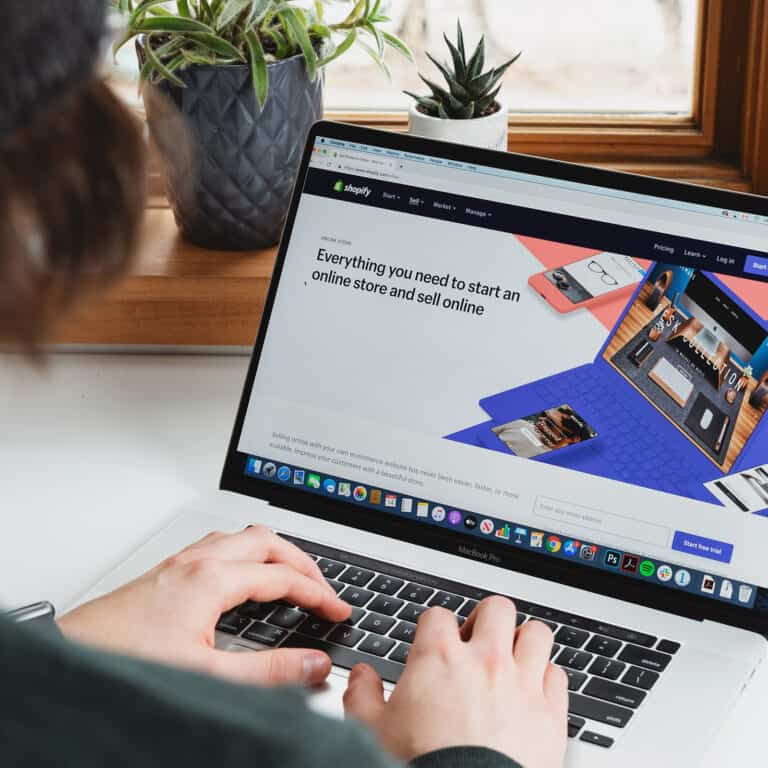How Do I Become an Affiliate Marketer? The Beginner’s Guide to Getting Started
I remember December 3, 2009, like it was yesterday. It was a pivotal moment in my life, though I didn’t realize it at the time.
I had just gotten off the phone with one of my customers. Once again, they blamed me for a problem on their blog that wasn’t my fault. I was pissed off and fed up with their complaints.
Back then, I ran a web development and hosting company and created blogs for other businesses.
Some of them were very successful. I had helped this particular customer grow their blog from the very beginning. They had gone from zero to over half a million monthly visitors. And their blog was making great money.
But I had enough of building blogs for others.
My clients were getting wealthy from my work. Everyone was getting rich… except me!
This spark made me want to start my own blog and make money from it.
So on December 3, 2009, I registered the domain name InvestorJunkie.com. The investing niche was an obvious choice for monetizing through affiliate marketing.
I already had some experience with affiliate marketing from my web-hosting business. I noted from my annual income reports that affiliate marketing accounted for one-third of my revenue.
Yet I didn’t have to do anything. I had no products, no inventory, and – best of all – no customer service. I just resold someone else’s service. Each commission was 100% profit for me.
It seemed like a no-brainer to me.
An Affiliate Blog Is Born
So I proceeded to build a review blog into a real business. It worked out so well that the income from my blog exceeded that from my existing business after just two years.
To make a long story short, I did very well with affiliate marketing. After nine years of building the blog, I sold Investor Junkie for $6 million.
My blog didn’t sell courses or have a paid membership area. I didn’t have any annoying ad banners, either.
All of the blog’s income came from affiliate marketing.
I’m here to tell you that affiliate marketing is a real business. The journey won’t be easy, and you won’t be an overnight success. But I can say it’s possible to be very successful with affiliate marketing.
I also have another guide on how to start affiliate marketing with no money.
I wish I had had something like this to help me through the process. So let’s dive in!
Before we dive into the steps, let’s start with the basics of affiliate marketing.
What Is Affiliate Marketing?
Affiliate marketing, also known as performance or CPA marketing, is an arrangement by which you earn a commission for promoting another company’s products or services.
Although it’s a form of online adverting, affiliate marketing works differently than just hosting ad banners. Unlike ad banners, with affiliate marketing, you usually don’t get paid unless a visitor “converts.”
Typically, a conversion is a purchase made by the prospect (the visitor to your site).
But some merchants define “conversion” differently. It can be as complex as a customer not only purchasing a product but also performing a specific action after making that purchase.
In other cases, it can be as simple as an email lead.
Affiliate Marketing Glossary of Terms
Like any topic, affiliate marketing has its own lingo. The definition of affiliate marketing itself is a word salad and a lot to digest. So let’s break down the terminology you’re likely to see.
- Merchant – The business selling a product.
- Product – The item sold by the merchant and promoted by the affiliate.
- Affiliate – The third-party promoting the merchant’s product. Also known as the publisher, associate, or partner.
- Super Affiliates – The highest-performing affiliates. Fewer than 20% of affiliates are super affiliates, yet they generate 80% of all conversions.
- Affiliate Link – Also called the tracking link. This unique URL tracks the clicks and conversions from the affiliate.
- Conversion – An event defined by the merchant deemed payable to the affiliate. It can be anything defined by the merchant but is usually a lead or the purchase of the merchant’s product.
- Prospect – An individual who performs a conversion with the merchant. Also known as a lead, customer, or client.
- Affiliate Network – An optional intermediary between the merchant and the affiliate who helps facilitate commerce.
- Affiliate Manager – A person who works with affiliates as a go-between with the merchant. Their goal is to maximize the performance of the affiliate program.
- Affiliate Program – An arrangement in which the merchant pays commissions to affiliates.
- Offer – A specific promotion of a product.
- Click-through Rate (CTR) – The percentage of affiliate-link clicks per number of web page impressions.
- Conversion Rate (CR) – The percentage of clicks that converted.
- Cost per Action (CPA) – A commission model in which merchants pay affiliates for conversions only.
- Cost per Click (CPC) – A commission model in which merchants pay affiliates for clicks only. It’s typically used with ad banners rather than affiliate marketing.
- Postback URL – A URL used for server-side conversion tracking, also called server-to-server tracking.
- Pixel – A hidden image that tracks when a web page view event occurs. In the context of affiliate marketing, a pixel tracks when conversions occur. Today, instead of images, pixels are typically pieces of JavaScript code embedded on a webpage.
- SubID – A string of text embedded as part of the affiliate link that is defined by the affiliate and used to track conversions by the affiliate.
- Creative – An ad banner image or text the affiliate uses to promote the merchant’s product.
- Copy – Written text that helps promote the merchant’s product.
- Co-branding – An instance in which the affiliate’s logo, copy, or branding appears on the merchant’s landing page.
- Landing Page – The merchant’s webpage to which affiliates refer traffic via an affiliate link.
- Ad Blocker – Web browser technology that can prevent the tracking of affiliate clicks and conversions. In addition, it can also prevent the display of ad banners.
- Attribution – The process of correctly identifying which affiliates are generating conversions.
- Charge Back – An invalid conversion results in the affiliate’s commission being forfeited.
- Commission – The income an affiliate earns for generating a conversion. It is also known as a referral fee, a finder’s fee, or a bounty.
- Cookies – Information stored on a prospect’s web browser to identify that particular visit. With affiliate marketing, cookies track affiliate link clicks and potential conversions.
- Link Cloaking – Hides the affiliate link with a cleaner-looking URL than the merchant provided. Link cloaking can better manage links and track clicks and conversions. For more info, see my article on link cloaking.
How Much Money Can I Make As an Affiliate Marketer?
As with any business, the upside potential is unlimited. As I wrote at the beginning of this article, I started my blog Investor Junkie in December 2009 from scratch and sold it for $6 million in 2018.
And I’m not some unique snowflake. Here’s an article that covers several affiliate marketing websites that sold for seven figures. These are all documented from public information, so they are legit. This isn’t some blogger’s monthly income report that could be made up.
I personally know other bloggers who make over six figures a month blogging – all from affiliate marketing. However, I will say that many bloggers make a few thousand per year – a good side hustle.
In the end, affiliate marketing is what you make of it, how well you execute it, and the effort you put into your blog. It is not a get-rich scheme, nor will you be an overnight success.
Not Sure If Affiliate Marketing Is Right For You?
How Does Affiliate Marketing Work?

At the high level, this is how affiliate marketing works:
- A visitor to your blog reads an article on your website.
- The visitor then clicks on an affiliate link, which redirects the visitor to the merchant’s website.
- On the merchant’s site, the visitor then performs the desired event.
- The affiliate is credited for the event.
It looks simple, but behind the scenes, it gets more complicated.
The Tech Behind Affiliate Marketing

Warning: Nerd Alert!
The details of affiliate marketing can get pretty technical, and I won’t hold back. If you’re not interested in finding out how the process works, skip this section for now and read How To Get Started With Affiliate Marketing.
The HTTP protocol, which drives all websites, is stateless. With HTTP, the website has no memory of previous visits.
By default, when an individual visitor travels among pages on a website, the web server doesn’t know their identity. A web browser cookie is one method to get around this limitation.
When visitors click on a unique affiliate link URL to enter a merchant site, they are tagged with a cookie.
Cookies can have many uses, but in affiliate marketing, they identify a visitor from one webpage visit to the next. This way, the affiliate gets credit when a conversion occurs.
Like the cookies you can eat, web browser cookies don’t last forever.
A cookie’s “time to live” (TTL) can vary from a few minutes to years. For affiliate marketing, the typical TTL is 30 days. Typically, the longer TTL, the better.
One of the disadvantages of affiliate marketing is its reliance on cookies to get proper affiliate credit.
Accurate Attribution
Attribution is a hot topic in affiliate marketing because tracking is not always 100% accurate.
Tracking becomes difficult when a user visits a page using multiple devices (such as a phone, a laptop, etc.). It also doesn’t work when a visitor uses an ad blocker.
Affiliate marketing technology is always improving, but there will be cases in which conversions are missed. Affiliate networks do better at tracking conversions than in-house affiliate programs managed by the merchant.
How to Get Affiliate Links
Affiliate links don’t just fall out of the sky.
You must acquire them by signing up for a merchant’s affiliate program. That program can exist directly with the merchant or, in most cases, through an affiliate network.
Merchants can give you links via two methods – either an in-house affiliate program or a network. Most affiliates work with a merchant through an affiliate network program.
For a list of affiliate programs, read:
Affiliate Networks
A network affiliate program involves working with a third party to manage your relationship with the merchant. Generally, an affiliate network manages communication, affiliate links, tracking, reporting, and payment.
Affiliate networks typically have thousands of merchants to choose from. You join the affiliate network and then apply to each individual merchant program. Some automatically approve applicants, while others manually review and approve new affiliates.
Once approved, you will have access to special affiliate links that are unique to you. These unique links can be placed anywhere you want to promote that merchant’s product. It could be on your blog, in an email, on your YouTube channel, etc.
NOTE: It is always important to read the terms of your affiliate agreement before you start promoting a merchant. Ensure you are clear on where you can or cannot place your affiliate links. For example, most merchants forbid you from bidding against their brand name with Google Ads or pretending to be the brand. Always check the restrictions before promoting; otherwise, you may get banned by the merchant.
Affiliate networks have many advantages over in-house affiliate programs:
- They act as a go-between you and the merchant.
- They ensure timely payouts of commissions.
- They allow you to work with thousands of merchants from one dashboard.
- They serve as auditors of the merchant’s conversions to ensure things are on the up and up.
- They can guarantee more accurate tracking of affiliate clicks and conversions.
- They provide you with better reporting than in-house affiliate programs.
In-house Affiliate Programs
With an in-house affiliate program, you typically work much closer with the merchant and have a much tighter relationship.
As with affiliate networks, you get affiliate links from the merchant’s affiliate program. The merchant is responsible for conversion tracking. Unfortunately, you cannot know if a merchant is fudging conversions and depend on the merchant for timely payments.
The advantages of an in-house relationship:
- A closer relationship with the merchant
- Typically higher payouts than what’s available via public network affiliate programs
- More flexible options to increase conversion rates
How Do Affiliate Marketers Get Paid?
As an affiliate, you get credit when a pre-determined event occurs. Usually, the event is a sale or conversion. This is otherwise known as Cost Per Action or CPA. In affiliate marketing, CPA is the most popular method to get paid. But it’s not the only option.
You can get paid for other types of events as well. Other options are:
- By lead (Cost per Lead, or CPL) – email address, phone number, address, etc.
- Per click (Cost per Click, or CPC) – no different than placing an ad banner.
- Impression (Cost per Thousand, or CPM – Some ads are also by this method.
The type of payout is determined by the merchant but can also be negotiated.
How often you get paid, and the payment method depends on the affiliate program. The most common way is in a monthly payout.
Affiliate networks are usually better with payments and on a well-kept schedule. Almost all networks require payments on a schedule (almost always monthly). Otherwise, a merchant’s programs would be shut down until their back payments were made current.
This is an important difference from an in-house affiliate program. While the payout and relationship are typically better, the payments may not be. It’s not uncommon in large company AR departments to make payments on a net 90-day schedule. You’ll have to wait 90 days to get paid for conversions three months prior.
Consider this potential problem if your merchant is a slow payer or requires collections of old invoices.
Most affiliate networks offer an electronic payment method – usually direct deposit or PayPal. On the other hand, direct relationships may support only direct deposit. Worse yet, I’ve worked with some companies (high-tech firms, no less) that still cut physical checks.
How Do You Track Affiliate Links?
With hundreds or perhaps thousands of affiliate links spread across social media, your blog, and your email, tracking all of your affiliate links can be difficult.
Many beginner affiliate marketers take the URL links directly from a merchant and insert them in their blog. Do not make this mistake! You’ll regret it later if you need to swap a link out (which is a common occurrence).
Summary
| Platform | Cloud |
|---|---|
| Conversion Tracking | No |
| Price | $5 - $253 per month |
| Annual Discount | No |
Instead, I recommend using a link tracker service. It is not only easier to manage but can get analytics of clicks.
A popular service many beginner affiliates use is Geniuslink. There’s no plugin to install, and it is a self-contained service. Best of all, it’s only $5 per month.
For A Comprehensive List Of Link Trackers:
How to Get Started With Affiliate Marketing (6 Easy Steps)
Now that we’ve addressed some basic questions and terminology let’s discuss the steps to getting started as an affiliate marketer.
1. Pick Your Niche
The first – and most critical – step of affiliate marketing is picking your niche.
You should start with topics that interest you. More importantly, your niche should be helpful. As an entrepreneur, you want to be a problem solver. If you have a problem, surely others do too!
You don’t create a business to help yourself. You create a business to help others.
A common mistake entrepreneurs make is starting a business to get rich. Yes, you can get rich, but that’s only the side effect of helping others.
The more people you help, the bigger your reward.
Even I fell into this trap when I started my blog Investor Junkie. Its niche was investing. Yes, I was interested in investing, and I knew many people struggled with the topic and needed help. But my first blog posts were anything but helpful. I wrote about topics that interested me. The result? No one cared.
My blog didn’t take off until I wrote articles to help others.
Another common mistake is picking a niche with no competition. I used to think that, to succeed in business, I had to create the most complicated business idea that no one else had thought of.
There’s no such thing as a unique idea on the internet. If you’ve thought of it, someone else has already done it.
What matters isn’t how unique your idea is but how well you execute it.
Pick a popular niche but one that you feel has an opportunity for growth. This is exactly what I did with Investor Junkie.
If you think everything has been said about that niche, there are no unique angles about a topic or new functionality you can add to a blog, then perhaps that market is saturated. Maybe it isn’t a good idea for a niche.
But I’ve realized that sometimes the simplest ideas are the best.
Another common mistake is making the niche too broad. This is especially true when you are starting out.
Don’t make kitchen utensils your niche. It’s too wide a topic. Yes, the search volume is there, but it’s too broad to rank for articles.
Instead, I would recommend registering a domain name that covers a broad topic, but that fits one or possibly two specific niches to start. You can always expand later.
If your topics are all over the map, they won’t help you with your audience or Google.
To continue with the previous example of kitchen utensils, I would narrow my niche to two topics – knives and cutting boards. Not only are they pretty narrow in scope, but they complement each other.
2. Start a Blog
After you’ve determined your niche, the next step is to create your blog. While making affiliate marketing money without a blog is possible, I don’t recommend it. You want your blog and organic search traffic to be the core strategy of affiliate marketing.
Yes, making money with YouTube or Pinterest is possible, but you don’t own these channels.
You own a blog and have control over it. You can only rent other channels, such as social media. You can be the hottest Instagram star since the Kardashians, but if Meta decides it no longer likes you, your business can disappear… overnight.
I’ve seen this happen too many times to other affiliate marketers. Don’t build your business foundation on quicksand.
Think of a blog as a bicycle hub. The hub is your blog. The spokes are channels such as email, paid traffic, Facebook, Instagram, YouTube, push notifications, and the like. Those channels are the means to attract visitors to your blog.
I’m not going to cover every step of creating your blog here. Instead, I already have the details in another aptly named article, “How to Start a Blog and Make Money.”
3. Create Content
Since the core of your business is a blog, you want to create content on it. SEO (Search Engine Optimization) is the recommended method to attract visitors to your blog. While you want to create other ways to build an audience, organic search is still the primary method.
According to GrowthBadger’s research, most traffic to a website is from organic search. Since Google is the No. 1 search engine by a long shot, you need to be on Google to be found. Yes, you can focus on social media, podcasts, and paid traffic, but if you aren’t focusing on SEO as a blogger, you are missing out on a huge audience.
For this step, I recommend creating at least 25 articles before you continue to the next step. These shouldn’t be short 200-word posts but long, in-depth articles about your niche. If you are in a niche about losing weight, don’t write articles about your cat. Stay in your lane and write about the niche you set out to create.
You cannot skip this step. You need a completed website before considering applying for affiliate programs. If your blog has no content, not only will you have no audience, but you’ll stand little chance of getting approved by an affiliate manager.
Therefore, plan on the 25 articles you want to write before you start writing them. Create keystone articles that are easy to rank for. If you can buy a keyword research tool like Ahrefs, I highly suggest doing so. A keyword research tool is invaluable.
And there are some free options available.
Google Ads, Google Trends, and Google’s own search engine results are great free tools for discovering topics to write about. My course SEO for Writers tells you how to use these services for free, what types of content you should write and how to write content, so Google finds you.
4. Build Your Audience
The next step is to build your audience.
The most common method is via organic search – otherwise known as Search Engine Optimization (SEO). However, you have more options than ever today:
- YouTube
- TikTok
- Podcast
- Quora
- Paid traffic
The list goes on and on.
Ideally, you want to build a fan base of repeat visitors to your blog. Stats show it takes more than one touch point before a visitor converts. The data shows it takes eight to 12 visits before a visitor trusts you enough.
SEO should be part of your audience-building strategy because 50-80% of all traffic to a blog comes via organic search.
5. Sign Up for Affiliate Programs
You should go on to this step only after you’ve completed the first four steps. Applying for affiliate programs before starting your blog is like building a house before the concrete foundation has solidified.
Effectively, when you sign up for an affiliate program, you become a “partner” with the merchant’s sales funnel. But not all affiliate programs are created equal.
I touch on the best affiliate marketing programs every beginner should sign up for, to help you avoid picking the wrong ones.
You can sell any product or service via your blog with the affiliate programs I recommend.
Depending on your niche, you should also consider signing up with merchants that aren’t among the ones I recommend.
How do you know if a merchant has an affiliate program? Google “[brand-name] affiliate” or “[brand-name] partner program.”
Many merchants don’t advertise their affiliate programs. Rather than getting an influx of new affiliates, they’d rather keep it hush-hush. You have to contact these merchants directly and ask if they have an affiliate program.
I’ve also had great success by reaching out to merchants that don’t have affiliate programs and asking if they’d like to start one. However, I don’t recommend this option until you are an established player with some clout in your niche.
6. Profit!
I’m only half-joking about this last step. Your journey has only just begun. These are the basic steps to getting started with affiliate marketing. Yes, many other details are not yet included, but this is a solid foundation you can build with more advanced topics in affiliate marketing.





